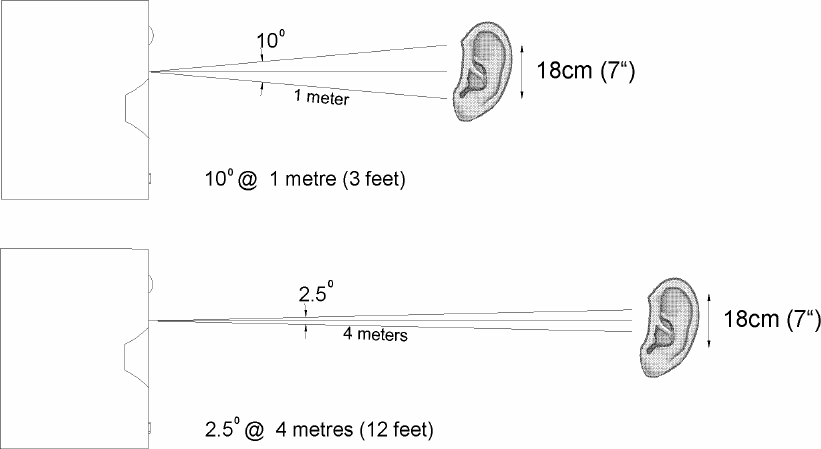
3.0 PLACEMENT OF THE SPEAKERS
Now here’s the truly critical stuff. Speaker placement and the listening environment can
completely compromise the performance of any loudspeaker, no matter how much it costs. It is
important to understand some limitations of near-field speakers, and the operating environment,
in order for you to gain the maximum performance from the pair sitting in front of you.
3.1 Orientation
Two-way speakers have a correct orientation for the serious listener. Two way systems use a
separate woofer and tweeter mounted in a vertical line on the baffle. There is a fixed vertical
distance between the centre of the two devices on the baffle, and there is fixed distance between
the apparent acoustic center of each device and the plane of the baffle at the crossover point. By
stacking the woofer and tweeter vertically, we minimize the problems caused by these physical
offsets. The near-field listening conditions magnify the effects of the driver offsets, so we really
need to optimize the speaker orientation. When you are very close to a speaker system, vertical
head movements are significant because your movement represents a large change in angle of
arc, and therefore the number of degrees above and below the axis (that’s the line between the
woofer and tweeter). In other words, bob your head up and down a few centimeters within a
metre of the cabinet, and your ear moves through a larger angle relative to the speaker axis than
it does with the same vertical motion 4 or 5 metres away. Need proof? Put on some music, not
loud, and get really close, about 500mm (20”) away. Move your head up and down now, and you
can actually get the musical image to break into a separate high frequency and low frequency
source. This is a wildly exaggerated example of what we’re talking about. It isn’t that bad out here
in the normal listening position, but the variations are still there.
All two way component systems have to live with some listening position dependent compromises
at the crossover point. The crossover frequency of all of these small systems falls into the center
of the midband (2.0kHz to 3.0kHz), where we are most capable of recognising frequency/phase
response deviations.


















